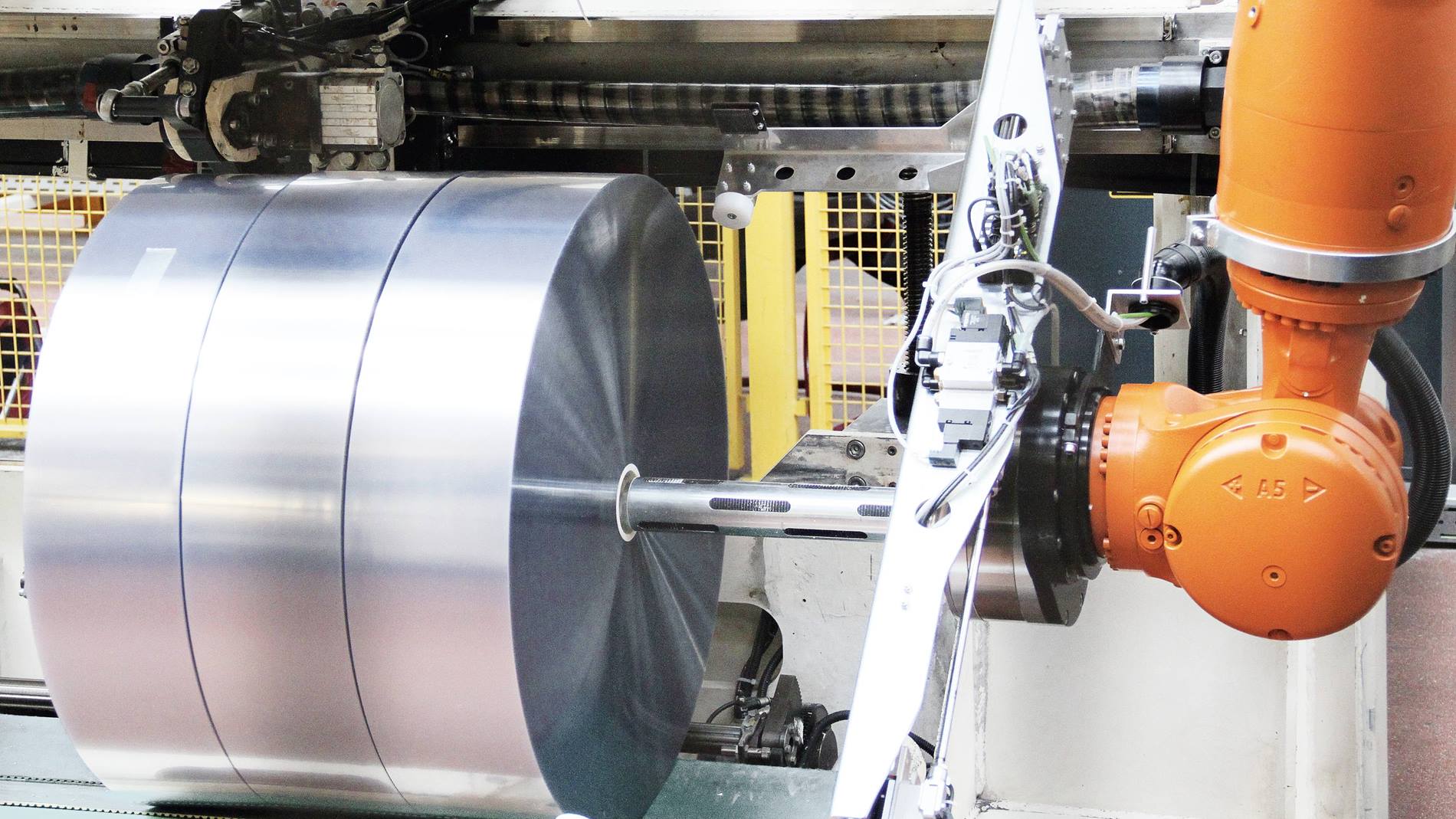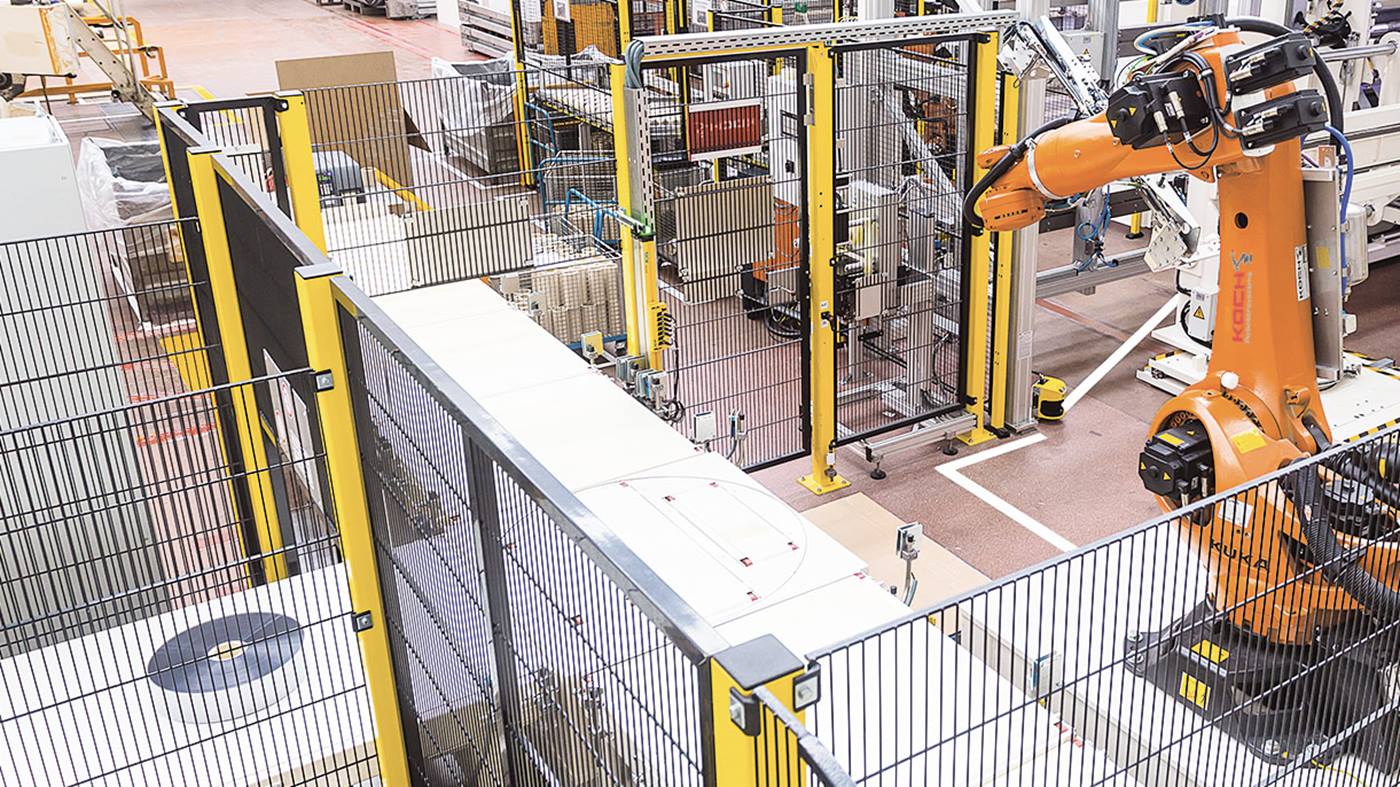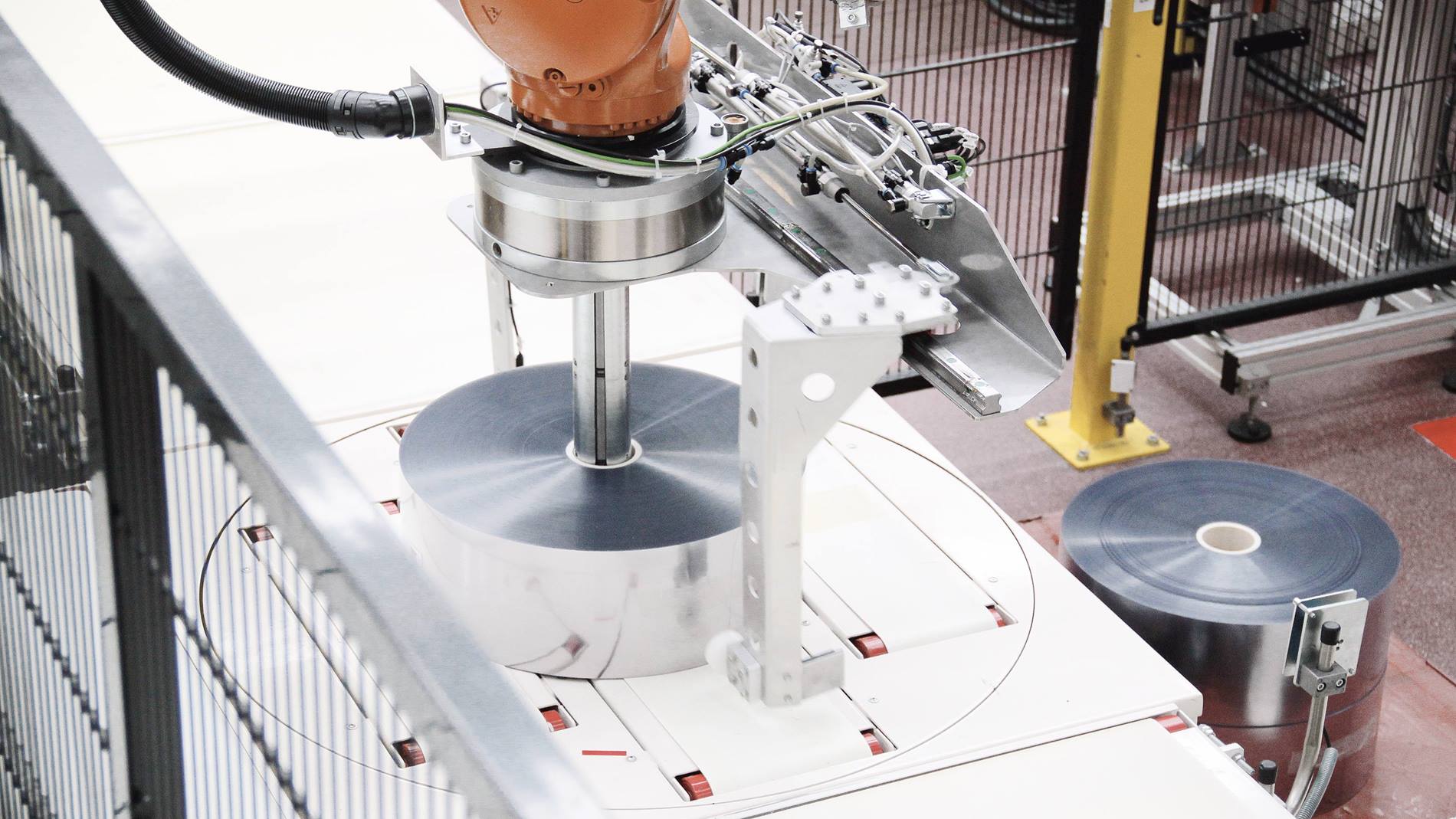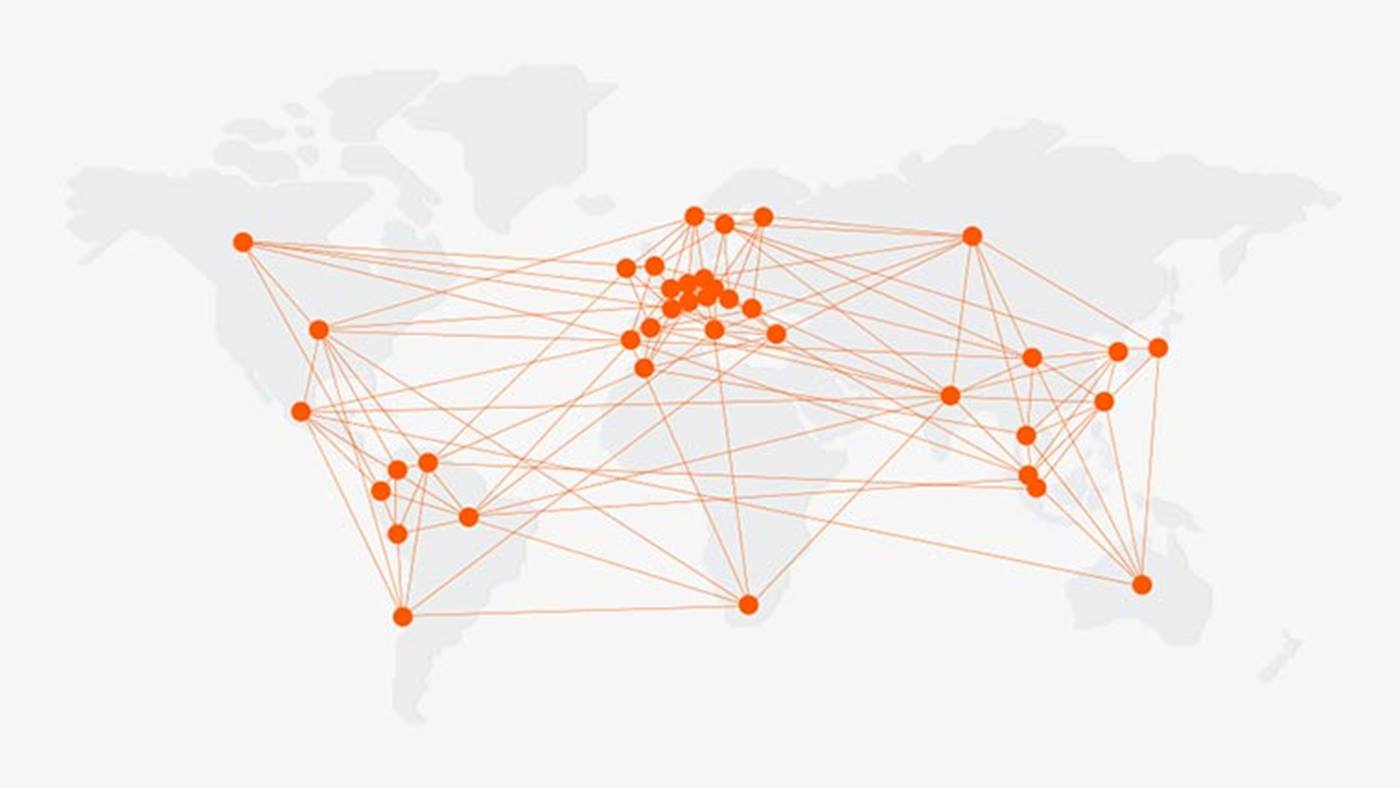Bilcare Research AG is among the world’s leading manufacturers of barrier films and rigid PVC films. Film production has been a key focus for the company for over 50 years and provides customer-oriented solutions to the pharmaceutical, printing and labeling industries as well as to security and credit card customers. Bilcare has automated its order collation and packaging area at the Bötzingen site in conjunction with KUKA’s systems partner, KOCH Industrieanlagen, in order to increase their long-term competitiveness. A total of seven KUKA robots ensure that film reels are packaged quickly and to the highest standards.
The complexity of the automation solution becomes clear as soon as you enter the production hall at Bilcare Research, where the mother reels for the pharma-blister films are cut. “Our packaging area has been automated right up to the customized pallets which are ready for dispatch and our cutting room now includes a new automatic reel splitter from KAMPF”, explains Jochen Molt, Site Manager at Bilcare Research.
“Over and above this, KOCH has modernized the two machines we had available for connecting to the decentralized, automatic reel packaging line. The planned increase in productivity in the order collation and packaging area has led us to make this investment. Until now, we had assigned a local packaging line to each reel splitter.”
PLC decides on the palletizing system
Incoming orders are entered into the SAP ERP system which schedules the orders, optimizes them for production and sends them to the KOCH PLC control system. The machine data collection runs on a new MES system, a specific industry solution for reel manufacturers and converters. The PLC compares the reel diameter and the corresponding palletizing pattern with the size of the intended load carrier and carries out a plausibility assessment to decide whether it’s possible to palletize automatically. Otherwise the rolls are sent to a separate packaging line.
A fully automatic system has been developed to position the cores. In this case, a KUKA KR 6-2 takes on the central positioning and measuring function to ensure that the core is in the correct position. Depending on the order, the robot positions between two and 20 cores. It also removes the core automatically from a magazine or may also be connected directly to a core cutter. Then the robot places the core on a so-called clamping and transfer unit which ensures that the cores are properly pushed onto the winding shaft.
The great advantage here is that the cutting machine and the robot work independently of each other. When there is a new order, the robot receives the new cutting widths and positions from the order management system and the prescribed cutter adjustments.
The KR QUANTEC robots of type KR 300 R2500 ultra assigned to the reel splitters remove the finished film reels, which have diameters of 250 to 800 millimeters, weights of ten to 200 kilograms and widths of 75 to 450 millimeters, and lay them on a conveyor belt. The robots in the system are equipped with clamping grippers which only exert slight pressure from the outside so that the film reels are not damaged.
The grippers are set in accordance with the reel diameters by the machine controller. The robots start and brake smoothly so they don’t damage the edges of the reels when setting them down. The
KR QUANTEC robots not only have a high load capacity of 300 kg and a reach of up to 2500 mm, but also offer impressive flexibility – these experts can handle a variety of weights, diameters and widths with ease.
A label is put on the inside of the core and the outside of the reel before and after packaging, which is marked with the order number, making it instantly identifiable. The system concept is decentralized, which has clear advantages: for example, the reels can be packaged in stretch film automatically – without any adjustments – as well as in random order, i.e. irrespective of their dimensions. At the next station, another ID and order label is added to the packaged reel. The reel is then brought to the automated palletizing area. Barcode readers capture the label data to ensure the correct line allocation.
The reels arrive at the palletizing area in random order and are automatically assigned to the three mobile robots, also of type KR 300 R2500 ultra. These robots palletize the required order on a total of 18 pallets. The four pallet types required for this are held in magazines and are brought to the palletizing stations automatically. Depending on the requirements, the KUKA robots place the packaged reels on the load carriers in either an upright or lying position.
If required, the robots add protective sheets or foam interlays, which come in five different versions at Bilcare Research, as well as a base sheet and cover sheet, where necessary. For this process, the robots work with customized clamping grippers developed by KOCH, which are equipped with a expanding mandrel as well as suction cups for lifting interlays, base sheets and cover sheets. The PLC calculates the palletizing patterns for the various reel sizes.
Due to the random system concept, the controller can distribute the pallets for an order to any winding machine. It’s also possible to introduce pallets from other parts of the factory to add them to the automatic load securing system. Barcode scanners register these pallets, which are then entered in the system and managed from there. The pallets are secured for transport at the strapping station and labeled. Fork lift trucks move the finished load carriers to the dispatch area. The order data records are transferred to the KOCH PLC, which notifies the ERP system of all completed transport and packaging steps.
Productivity increase of 30 per cent
The aim of the automated packaging line at Bilcare Research is to be able to meet customer requirements with even greater speed and flexibility. This is based on the ability to process individual customer orders automatically, to increase system availability and to gain a foothold in “Industry 4.0”.
As a result of this automation solution, productivity has increased by 30% in the first two years, and quality and hygiene standards have improved. The new system also relieves the workers of physical strain as the robots take on handling of the heavy reels. Last but not least, production planning and logistics have improved as a result of interfaces between the production controller and the commercial ERP system.
Molt is already looking to the future:




